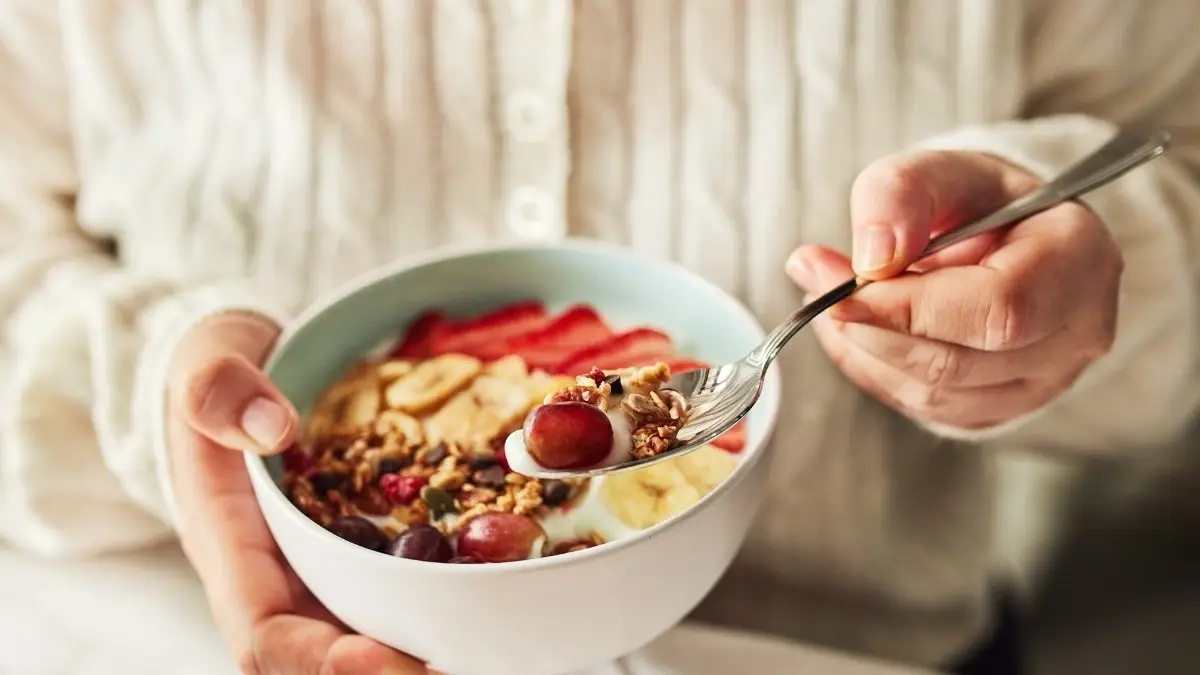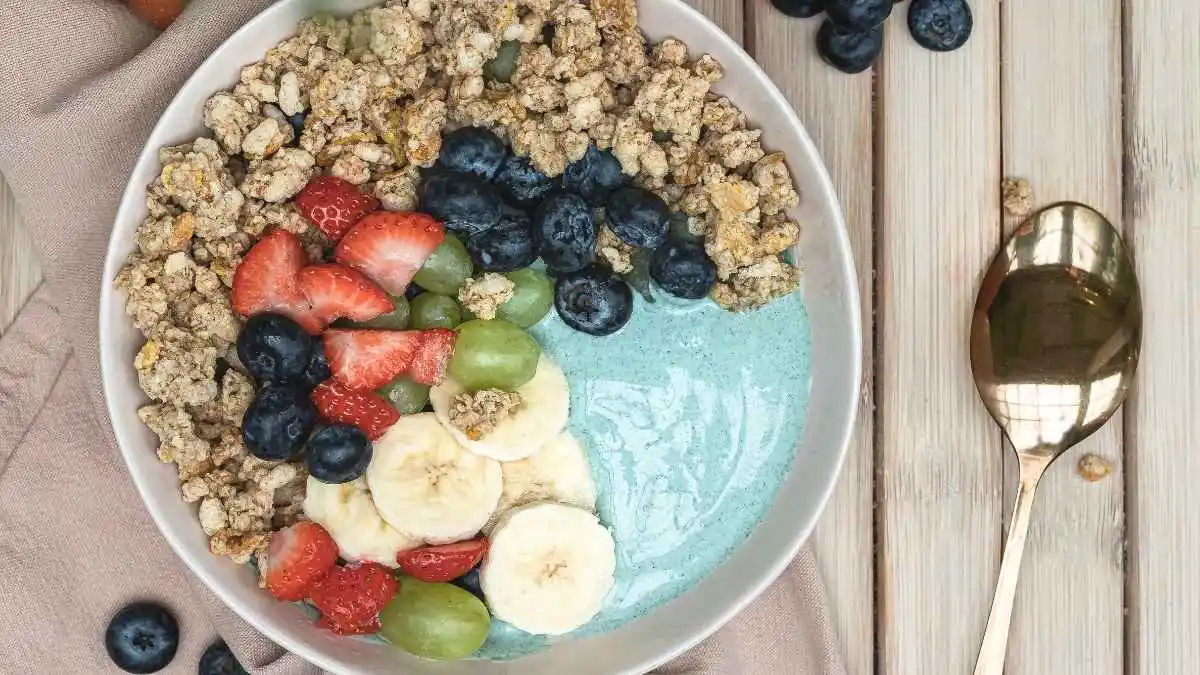You’ve been told your entire life that breakfast is the one meal you can’t skip. This single rule has likely shaped your mornings for years, making you reach for toast or cereal even when you’re not hungry.
The guilt of skipping it is real. But that feeling wasn’t based on science. It was manufactured. The breakfast mandate was born from a 19th-century moral crusade to curb sexual urges and later supercharged by a PR genius to sell more bacon.
This article exposes that history and replaces the myth with a simple truth from biology: your body runs on a 24-hour clock, and when you eat matters far more than what you eat first.
How Marketing Invented the “Most Important Meal”

Your modern breakfast, with its classic foods and special status, wasn’t created because your body needs it. It was built, piece by piece, by people with agendas that had little to do with your health.
The story of breakfast shows how business interests can be disguised as medical advice. To fix your meal timing, you first have to know that the meal you start your day with was a commercial invention.
Why Cereal Was Invented: A Fight Against Bad Thoughts and Indigestion
The story of your quick-and-easy breakfast starts with one very odd person: Dr. John Harvey Kellogg. In the late 1800s, he ran the famous Battle Creek Sanitarium in Michigan and was a doctor to presidents and business leaders.
His medical ideas came directly from his Seventh-day Adventist faith, which called for a plain vegetarian diet, no sex, and food without any exciting flavors.
At the time, many people worried about indigestion, which they blamed on the heavy, meat-filled breakfasts that were common. But Dr. Kellogg had bigger concerns. He strongly believed that masturbation was the cause of many health problems, from heart disease to acne.
He thought that rich and spicy foods fired up people’s passions and led to this “solitary vice.” The solution, he said, was a boring diet that would dull those urges.
Ready-to-eat cereal was born from this fight against sin and indigestion. After a few tries, an accident with stale dough led to the creation of thin, toasted flakes. These corn flakes were the perfect food for his philosophy: easy to digest, fast to make, and totally bland.
They were a food designed to stop people from having sexual urges. The invention of breakfast cereal wasn’t about making you healthier. It was a tool to fix what its creator saw as a moral problem.
This health food turned into a giant business because of a family disagreement. John Harvey Kellogg cared more about his mission than money. But his brother, W.K. Kellogg, saw that the product could sell.
W.K. wanted to add sugar to the flakes to make them taste better. John Harvey hated the idea, thinking it would ruin his pure food. They had a falling out, and in 1906, W.K. started his own company to sell sweetened corn flakes.
This created a problem that still exists in the breakfast industry today: a food that is sold as healthy but is really made to be tasty and profitable.
How a PR Genius Got You to Eat Bacon and Eggs
While the Kelloggs were making the “light and quick” breakfast popular, another man was working to create a very different morning meal. In the 1920s, the Beech-Nut Packing Company had a problem: people weren’t buying enough bacon.
Back then, a typical breakfast was small, maybe just coffee and a roll. To fix this, Beech-Nut hired Edward Bernays, a man who would change marketing forever.
Bernays, who was Sigmund Freud’s nephew, is known as the “father of public relations.” He had a new way of marketing that went beyond simple ads.
He knew how to shape what people thought. He believed people were led by hidden desires and trusted experts. His plan for Beech-Nut was a perfect example of his skills.
Instead of making ads for bacon, Bernays focused on the idea of breakfast itself. He went to his agency’s doctor and asked a simple question: is a “hearty” breakfast healthier than a light one? The doctor said yes, a big meal would be better to get back energy lost during sleep.
This was the opening Bernays needed. He then got the doctor to write to 5,000 other doctors to see if they agreed. A huge number—4,500 of them—said yes.
Bernays then sent this news to papers all over the country. He didn’t present it as a company survey. He framed it as a medical study. Headlines read, “4,500 Physicians Urge Heavy Breakfasts to Improve Health.”
The articles then suggested that bacon and eggs were the perfect example of a hearty, doctor-approved meal. The campaign was a huge success. Bacon sales shot up, and the bacon-and-egg breakfast became an American classic—a tradition created entirely by a PR campaign.
This was a key moment when medical authority was used to sell a product. Bernays didn’t do a real study. He just surveyed doctors and used the media to make it look like a scientific fact.
This created a playbook for health marketing that is still used today. It taught companies that it’s often easier to shape expert opinion than to just advertise a product.
The Slogan That Sealed the Deal: “The Most Important Meal of the Day”
Now the stage was set. Kellogg had made breakfast seem like a moral duty, and Bernays had given it the seal of medical approval.
The last piece of the puzzle came in 1944. In a marketing campaign for Grape Nuts cereal, the company General Foods created the phrase, “Breakfast is the most important meal of the day.”
The campaign, called “Eat a Good Breakfast—Do a Better Job,” was perfectly timed. It used radio ads and store flyers to connect eating breakfast with being productive and successful. These were important values during wartime America.
The message fit the culture perfectly. Vitamins had recently been discovered, and cereals were now being fortified with them, making them seem even healthier.
Also, with many women working to support the war, a quick and supposedly healthy meal for kids was more important than ever. Marketers used guilt to sell cereal as the right choice for a busy mom.
The phrase “the most important meal of the day” was the perfect finishing touch on 50 years of marketing. It worked because it combined all the previous stories into one powerful message.
It had the “health” feel from Kellogg’s clinic, the “hearty” idea from Bernays’ bacon campaign, and a new focus on “productivity” for the modern world. This slogan didn’t create the belief in breakfast.
It just locked it in place, making it a piece of common wisdom that would be hard to challenge for the next 80 years.
How Your Body’s Internal Clock Really Works

Now that you know the marketing myth behind breakfast, it’s time to switch from history to biology. The real reason meal timing matters has nothing to do with slogans. It’s about a simple biological fact: your body runs on a 24-hour clock.
This internal system was shaped by millions of years of life on a spinning planet. It controls every cell and organ in your body.
It gets you ready for the daily cycles of light and dark, activity and rest, and eating and fasting. Learning about this clock is the first step to replacing old food rules with a system that works with your body, not against it.
Your Body’s Two Clocks: The Conductor and the Orchestra
Your internal timing system is based on circadian rhythms. The term comes from the Latin words circa diem, which means “about a day.”
These are natural, 24-hour cycles that control almost everything about your body and behavior, from when you sleep and wake to your body temperature and metabolism.
This system works like an orchestra with a conductor.
The Conductor is a small group of about 20,000 nerve cells in your brain called the suprachiasmatic nucleus (SCN). This is your body’s master clock. Its main job is to sync your internal world with the outside world.
It does this by getting signals from light-sensitive cells in your eyes. The daily cycle of light and dark is the most powerful signal that resets this master clock each day. This keeps your internal 24-hour rhythm in sync with the planet.
The Orchestra is made up of many peripheral clocks in almost every other organ and cell in your body. These smaller clocks are found in your liver, pancreas, gut, heart, muscles, and even your fat.
They manage the daily, time-specific jobs of their local tissues. For example, they tell your liver when to make more glucose or your gut when to release digestive juices.
The beauty of this system is how it’s all coordinated. The SCN, your master clock, gets its light signals and then sends out timing signals to the rest of your body through nerves and hormones.
These signals tell the orchestra of smaller clocks what time it is, making sure all your tissues are working together. This system lets your body do the right things at the right time.
But there’s a catch. While the master clock in your brain mainly listens to light, the clocks in your digestive organs listen to another powerful signal: when you eat. This can create a big problem.
You can have perfect light habits, keeping your brain’s clock perfectly synced. But if you eat at odd hours or late at night, you send confusing signals to your liver, pancreas, and gut. This internal confusion is a major cause of metabolic problems today.
Why Your Body Handles Food Better in the Morning
Your metabolism isn’t like a furnace that burns calories at the same rate all day. It’s a rhythmic process that is set up to do different tasks at different times. Science shows a clear pattern: your body is designed to eat, digest, and use food most efficiently in the morning and afternoon.
When you wake up, your body is ready for action. A hormone called cortisol naturally peaks in the morning. This isn’t just a “stress hormone.” This morning spike is a healthy signal that helps you wake up, get energy, and prepare for the day.
At the same time, your insulin sensitivity is at its highest point. This means your muscle and liver cells are very good at taking sugar out of your blood after a meal. This prevents blood sugar spikes and helps you use energy well.
Your digestive system is also at its best. In the morning, your stomach empties faster and your gut makes more of the juices needed to break down food.
As the day goes on, this all changes. Your body starts to get ready for the nightly period of fasting and repair. When it gets dark, your brain starts to make melatonin, the hormone that helps you sleep.
The rise in melatonin is a signal for your whole body to slow down. Your pancreas makes less insulin, and your insulin sensitivity drops. Your body becomes less able to handle a lot of calories, especially carbs.
This shows that the advice to “eat for the day you’re about to have” is right, but for deeper reasons than just getting fuel. Your body’s systems ramp up in the morning not just because you eat, but in preparation for the active, eating part of the day.
Eating a big meal during this time of peak performance allows your body to use the nutrients in the best way. But eating that same meal late at night forces your body to do a “daytime” job during its “nighttime” repair phase.
This creates a major biological conflict. A calorie you eat at 9 AM is handled very differently—and much better—than the same calorie eaten at 9 PM.
What Happens When Your Clocks Don’t Match Up
Circadian misalignment is what happens when your body’s internal clocks get out of sync with the outside world or with each other. This can happen when your brain’s clock is on one schedule, but your liver’s clock is on another.
Modern life, with its bright lights at night, shift work, and 24/7 access to food, has created the perfect conditions for this problem.
One of the biggest things that throws off your internal clocks is late-night eating. When you eat a meal, especially a big one with lots of carbs, during your biological night—when melatonin is rising and insulin sensitivity is falling—you send a powerful and confusing “daytime” signal to the clocks in your gut, liver, and pancreas.
This tells these organs to get to work, which goes directly against the “shut down and repair” signals coming from your brain.
This creates a kind of “metabolic jetlag.” You usually think of jetlag as the tired feeling you get from traveling across time zones. But eating at the wrong biological time puts your digestive organs in a different “time zone” than your brain.
This isn’t just a small problem. It’s a constant, low-level stress on your body that can lead to serious health issues over time.
A lot of evidence now connects this chronic clock disruption to many modern diseases:
- Metabolic Problems: Misalignment is strongly linked to a higher risk of obesity, problems with blood sugar control, insulin resistance, and type 2 diabetes.
- Heart Disease: It has also been linked to high blood pressure, unhealthy cholesterol levels, and a greater risk of heart problems.
- Sleep Problems: Eating late at night can mess with your natural sleep processes, making it harder to fall asleep and reducing the quality of your sleep.
- Other Health Risks: The problems don’t stop there. Research has also linked circadian misalignment to a higher risk of some cancers, mood problems like depression, and even a shorter lifespan.
The New Science of Eating: When You Eat Matters as Much as What You Eat

Knowing that your body runs on a 24-hour clock doesn’t just tear down old myths. It gives you a new, smarter way to think about food. Now that you know the marketing history of breakfast and the biology of your internal clocks, it’s time to look at the solution.
This solution comes from a new and growing area of science that gives you a clear, evidence-based way to eat in the 21st century. It’s a science that looks beyond the simple question of what to eat and asks the more important question of when.
More Than Just What You Eat: A Guide to Chrononutrition
Chrononutrition is a new field of science that looks at the connection between when you eat, your body’s clocks, and your metabolic health. Its main idea is simple but powerful: when you eat can be just as important as what you eat.
This isn’t a diet that tells you to cut out certain foods. Instead, it’s a way of timing your meals to work with your body’s natural 24-hour rhythms to make your metabolism work better.
This is a big change in how we think about nutrition. For a long time, nutrition has been all about the food itself: calories, protein, fat, carbs, vitamins, and minerals. Chrononutrition adds a fourth key piece to the puzzle: time.
The evidence shows that the effect of the other three pieces is strongly influenced by this time factor. A healthy meal can have a very different impact on your blood sugar, fat storage, and hormones depending on the time of day you eat it.
A few key ideas have come from chrononutrition research:
- Eat More Earlier: Eating a bigger share of your daily calories earlier in the day, when your metabolism is at its peak, is linked to better health, including better weight control.
- Be Consistent: Eating your meals at regular and predictable times each day helps to keep the clocks in your digestive organs stable and in sync with the rest of your body.
- Stop Eating at Night: As you’ve learned, it’s important to stop eating a few hours before bed. This prevents you from messing up your body’s nighttime repair work and throwing your internal clocks out of sync.
By putting nutrition into a 24-hour context, chrononutrition moves past the old, one-size-fits-all diet advice. It offers a more personal and biologically smart path to health.
How a Simple Eating Window Can Change Your Health

A leader in chrononutrition research is Dr. Satchin Panda, a professor at the Salk Institute. His work has changed how we think about meal timing. His lab created the term Time-Restricted Eating (TRE).
It describes a simple but powerful idea: eating all your daily calories within a consistent window of time, usually between 8 and 12 hours. This creates a clear daily cycle of eating (the eating window) and fasting (the other 12 to 16 hours).
The main reason TRE works is because of the daily fasting period. It takes your body at least five hours to fully digest and process a meal. This means that a 14-hour overnight fast only gives your organs about nine hours of real rest.
During this important rest time, your body can switch from processing food to doing cell maintenance and repair. Modern eating habits—with late dinners and evening snacks—have gotten rid of this natural repair window. This forces our organs to be working all the time.
Dr. Panda’s first major study with mice showed this clearly. He found that mice that ate a high-fat, high-sugar diet but were only allowed to eat within an 8-hour window were protected from getting obese, diabetic, and sick.
But mice that ate the exact same number of calories from the same bad diet but could eat whenever they wanted became obese and sick. This showed that the timing of when you eat could be a key factor in your metabolic health, no matter the quality or amount of food.
Studies with people have started to show similar good results. TRE has been shown to have many health benefits, including:
- Weight loss and less body fat.
- Better insulin sensitivity and blood sugar control, even for people with prediabetes.
- Lower blood pressure and better cholesterol levels.
- Less inflammation in the body and a healthier gut.
The main benefit of TRE is that it brings back the daily repair cycle that modern life has taken away. This changes how you think about fasting. It’s not about starving yourself. It’s an active and necessary process for staying healthy, just like sleep is for your brain.
Why You Should Eat a Bigger Breakfast (and a Smaller Dinner)
The ideas of circadian biology and time-restricted eating all point to a strategy that gives scientific support to the old saying, “Eat breakfast like a king, lunch like a prince, and dinner like a pauper.”
A lot of research now shows that eating most of your daily calories in the morning and afternoon is better for your health and weight than eating most of them at night, even if the total number of calories is the same.
This strategy works because it lines up your biggest energy intake with your body’s peak metabolic performance. As you’ve learned, the morning is when you are most insulin-sensitive and your digestion is strongest.
Giving your body its biggest meal during this time ensures that the nutrients are used for energy, not stored as fat. On the other hand, eating your biggest meal at dinner, which is common in Western countries, is linked to a higher Body Mass Index (BMI) and a greater risk of obesity.
This is because a big evening meal floods your body with sugar and fat at a time when it is becoming more insulin-resistant and getting ready to fast and repair.
This new scientific view turns the old “breakfast is most important” myth on its head, but it saves a small piece of truth. The idea of a big morning meal was right, but for all the wrong reasons.
Its importance doesn’t come from a vague, marketing-based need to “kickstart your metabolism.” Its importance comes from the precise, time-based optimization of your body’s hormones and systems.
Science is now confirming the form of an old habit—a big first meal—but is completely replacing its wrong, commercial justification with a powerful and correct biological one. The goal is not to just eat breakfast. It’s to time and size all your meals to work with your internal clocks.
Your 2025 Breakfast Plan: How to Eat on Your Body’s Time

Putting the science of your body’s clock into practice doesn’t mean you have to completely change your life. It just means you need to change how you think. You need to focus not just on what you eat, but also on when you eat it.
This final part gives you a clear, practical, and easy-to-follow set of instructions for using the principles of chrononutrition. It’s a plan for moving past old myths and taking control of your health by eating in sync with your body’s natural rhythm.
How to Change Your Thinking About Food
Before getting into the steps, it helps to see the big shift in thinking this new approach requires. This table shows the difference between the old, marketing-based rules and the new, science-based principles of eating with your body’s clock.
| The Old Rule (From Marketing) | The New Principle (From Science) |
| “Breakfast is the most important meal; never skip it.” | “Your first meal is important; its timing and consistency help set your body’s clocks.” |
| “Eat sugary cereal or toast for quick energy.” | “Focus on protein and fiber in your first meal to keep your blood sugar stable and feel full longer.” |
| “A hearty breakfast means bacon and eggs.” | “A ‘hearty’ first meal is full of nutrients and gives you a large part of your daily calories upfront.” |
| “Eat whenever you feel hungry, day or night.” | “Set a consistent 8-10 hour eating window and stop eating at least 2-3 hours before you go to bed.” |
| “Focus only on what you eat (calories, macros).” | “Focus on when you eat just as much as what you eat, because timing is key for your metabolic health.” |
Step 1: Find Your Eating Window
The first step in lining up your eating with your body’s clock is to set a consistent daily eating window. This practice, known as time-restricted eating (TRE), gives your digestive organs the clear “eating” and “fasting” signals they need to stay in sync.
Set Your Window: Aim for a consistent eating window of 8 to 10 hours each day. For many people, a schedule like 8 AM to 6 PM, 9 AM to 7 PM, or 10 AM to 6 PM works well. The key is to pick a window that you can stick with.
Start Slow: Suddenly going from eating over 15 hours to an 8-hour window can be hard. A better way is to start by just writing down the time of your first and last calorie each day. Then, slowly make this window smaller by 30-60 minutes every few days. For example, if you currently eat over 14 hours, try a 12-hour window for the first week, then shorten it to 10 hours the next week.
Be Consistent: The power of TRE is in its rhythm. Keeping the same eating window as much as possible, even on weekends, is key to strengthening your body’s clocks and getting the full benefits.
Use an App: Tracking when you eat can be a real eye-opener. It can show you snacking habits you didn’t even know you had. There are apps that can help you with this.
Step 2: Rebuild Your First Meal
This new way of thinking isn’t about hating on breakfast or skipping it. It’s about making your first meal of the day better, whenever you have it, to support stable energy and good health.
Timing: It’s usually a good idea to eat your first meal within one to two hours of waking up. This breaks your overnight fast and gives your body the fuel it needs for the day.
What to Eat: The food in this first meal is very important. The typical modern breakfast of refined carbs and sugar (cereal, pastries, sweet yogurt, toast with jam) causes a quick spike and then a crash in your blood sugar. This makes you feel hungry and tired a few hours later. Instead, your first meal should be built around three key things:
Protein: Helps you feel full and builds and repairs your body. Good sources are eggs, Greek yogurt, or a quality protein powder.
Healthy Fats: Support your hormones and give you long-lasting energy. Good sources are avocado, nuts, and seeds.
Fiber: Slows down digestion, keeps your blood sugar stable, and feeds the good bacteria in your gut. Good sources are berries, leafy greens, chia seeds, and whole oats.
Simple Meal Ideas:
A bowl of plain Greek yogurt with fresh berries, a tablespoon of chia seeds, and a handful of walnuts.
Two or three scrambled eggs cooked with spinach and a side of avocado.
A smoothie made with unsweetened almond milk, a scoop of protein powder, a big handful of kale, and a tablespoon of almond butter.
A bowl of steel-cut or rolled oatmeal (not the instant kind) made with water or milk, mixed with nut butter and topped with seeds.
Step 3: Follow the “Last Meal” Rule
Just as important as your first meal is your last one. The timing of your final meal of the day is one of the best ways to control your body’s clock and your sleep quality.
The 3-Hour Rule: The most important rule to follow is to finish eating all your calories—including meals, snacks, and drinks with calories—at least 2 to 3 hours before you plan to go to bed.
Why It Works: This rule lets your digestion mostly finish before your brain starts making a lot of melatonin. Eating too close to bedtime can mess up this process, make it harder to fall asleep, and force your digestive organs to work when they should be repairing. This leads to bad sleep and metabolic problems.
Tips to Make It Work:
Make Dinner Lighter: Plan your day so that dinner is your smallest meal, or at least not your biggest.
Take a Walk After Dinner: A short, 10-15 minute walk after dinner can help with digestion and lower your blood sugar response. This makes it easier to switch into your fasting state.
Have a “Kitchen is Closed” Rule: Make a firm rule for your home that after a certain time (like 8 PM), the kitchen is closed. You can replace evening snacking with other rituals like drinking herbal tea or reading a book.
Step 4: Listen to Your Body Type (For a More Personal Plan)
While the main ideas of chrononutrition are for everyone, you can personalize the timing of your eating window by knowing your chronotype. Your chronotype is your natural tendency to be a “morning person” (a lark), an “evening person” (an owl), or somewhere in between.
For Morning Larks:
If you naturally wake up early and have the most energy in the morning, you’ll probably find that an earlier eating window (like 7 AM to 5 PM) feels right for you. Following these rules will likely feel easy and natural.
For Evening Owls:
This is where the biggest challenge—and the biggest opportunity—is. Research shows that evening types are more likely to have irregular eating habits, skip breakfast, and eat more calories late at night.
All of these are linked to worse health. The advice for owls is not to force yourself to eat a big meal at 6 AM. Instead, you should aim for a slightly later but still consistent window (like 10 AM to 8 PM or 11 AM to 7 PM).
The most important rule for owls is to strictly follow the “no food 2-3 hours before bed” rule. By setting a consistent window and not eating very late, evening types can lower some of the health risks that come with their body type.


